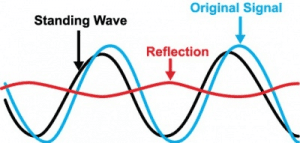What’s VSAT?
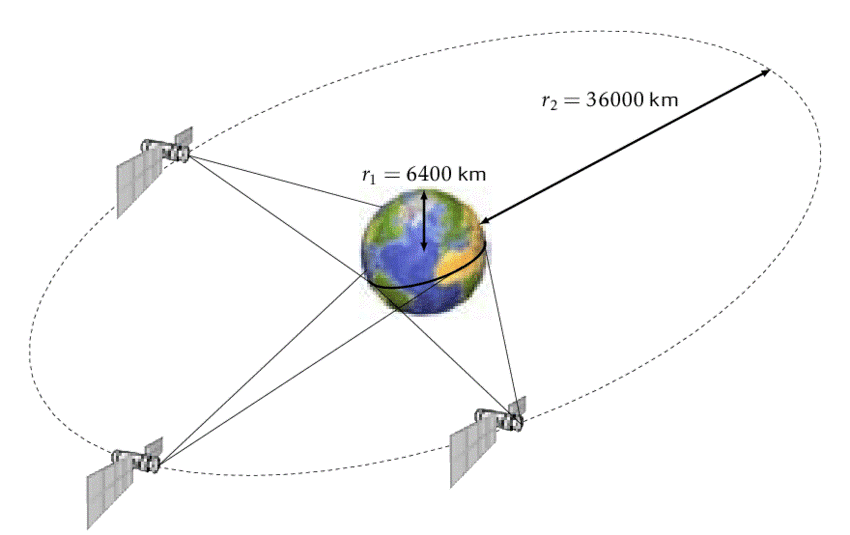
Our quest for enhanced communications over distance is prevalent throughout history and has come in many forms; drumbeats, smoke signals, carrier pigeons, and more recently the manipulation of electromagnetic waves propagating free space. At the end of the day, all solutions have the same fundamental attributes; maximizing coverage, efficiency, robustness and security.
Very-small-aperture terminal (VSAT) is one of a multitude of modern options that provide global data link coverage. The infrastructure for the system is a series of geostationary satellites, whose application was initially postulated by George O. Smith and later expanded upon by
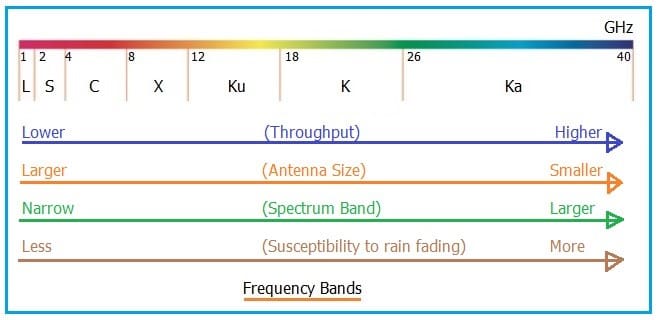
Author C. Clarke. The idea was at a certain altitude (35786 km) an object at the correct velocity (3.07 km/s) will maintain a fix position relative to the surface of the earth; this orbital location is known as the Clarke belt. What differentiates VSAT from other satellite-based systems is the size of the aperture or antenna (parabolic reflector) which is less than 3.8 meters and is typically in the range of 75 cm to 1.2 m. The frequency spectrum implemented covers C-Ka band (3.7-40GHz), each band having tradeoffs. With an increase in frequency the reflector size decreases, data rates increase and so does path loss due to atmospheric attenuation. Expected data rates can vary from 4kbps to 100Mbs and depend on application, configuration and frequency band. VSAT has several applications and is present in all market segments that require data links; consumer, commercial, scientific and military.
Why VSAT?
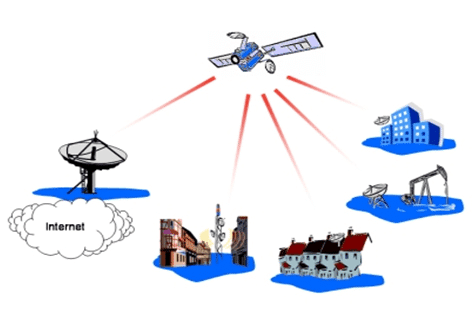
The benefits and attraction of VSAT are clear; highly mobile, rapidly deployable, large

geographical footprint and no defined infrastructure requirement. In some rural markets there are no other options for consumers to access the internet; ViaSat and HughesNet provide nationwide service. ViaSat is committed to global broadband coverage; their current fleet ViaSat-1 and ViaSat-2 service North America while the first of three next generation ultra-high capacity ViaSat-3 satellites will be operational by Dec 31, 2021. Once all three are in operation the system will be capable of delivering Terabit per second speeds globally. In conjunction with broadband VSAT service is ideal for remote industry such as oil wells where system health and other valuable data is transmitted. This goes hand in hand with scientific applications such as weather stations, ocean temperature monitoring and tsunami warning systems. Additionally, VSAT is extremely secure and is used for banking transactions and gaming such as lottery systems; HughesNet is the largest provider for US lottery services. When considering all the benefits of VSAT, it is apparent that it would be ideally suited for military applications and is a critical component to the modern-day battle theater.
How It Works
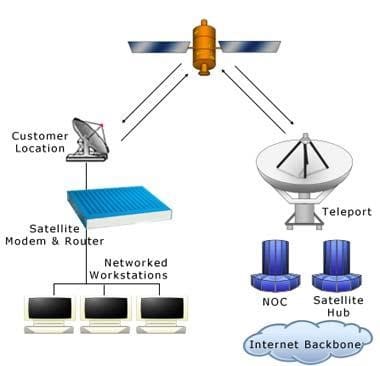
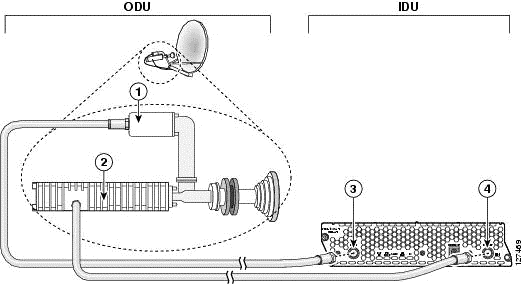
There are three basic building blocks critical to forming a VSAT communication network; ground system, satellite constellation and outdoor unit (ODU). The ground system handles satellite tracking and telemetry, carrier up / down conversion, modulation of transponders and data packet routing. The satellite is generally a repeater, receiving uplink transponder signals, converting them to lower downlink frequencies, amplifying then rebroadcasting them back to earth. The satellite also provides sectorization of the downlink signal by use of beamforming that isolates geographical regions for frequency reuse. The ODU is comprised of a reflector, block upconverter (BUC), low noise block downconverter (BDC), orthomode transducer (OMT), cabling and indoor unit (IDU). The reflector is pointed towards the satellite, the reflector focuses the energy towards the input waveguide feedhorn, the OMT waveguide separates the up / downlink waveforms. The downlink path is amplified and downconverted then routed to the IDU via coax cabling. The uplink signal emanates from the IDU is fed to the BUC via coax cabling then combined with the downlink waveform by means of the OMT then transmitted.
Down to Earth
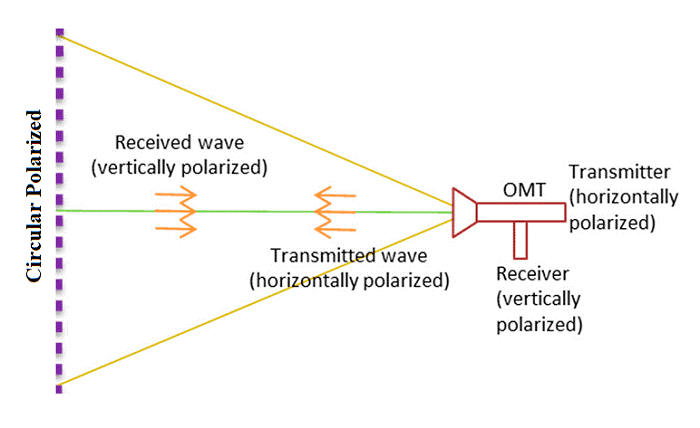
The ODU can take many forms and is dependent on the application; will it be in a fixed position, will it be in motion, is it battery operated? The first two features relate primarily to mounting structure, in fixed position the ODU would be permanent (lowest cost), mobile non-tracking would be quickly deployable (medium cost) and tracking which is the most complexed requires azimuth and elevation manipulation in conjunction with satellite position tracking (highest cost).
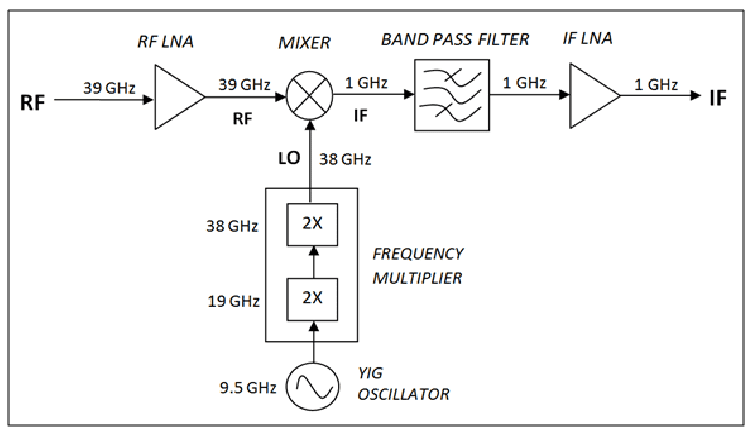
Regardless of the mounting technique the OMT, BDC and BUC are common components and will differ depending up / downlink frequency, uplink transmit power and whether battery operated.
The OMT separates the linear horizontal and vertically polarized wave components from a circular polarized wave front and conversely in the opposing direction, combines them back to circular. Circular polarization is implemented to simplify the positioning of the reflector eliminating the need for polarization alignment.
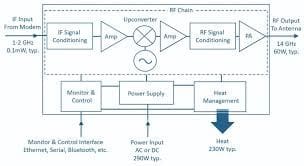
The BDC is a low noise (LNA) high gain amplifier that increases the amplitude of the faint incoming satellite waveform while minimizing additive noise thus maximize signal to noise. Additional function of the BDC is to downconverter the signal post (LNA) by mixing this signal with a local oscillator, provide filtering and IF gain to be system requirements. Minimizing noise
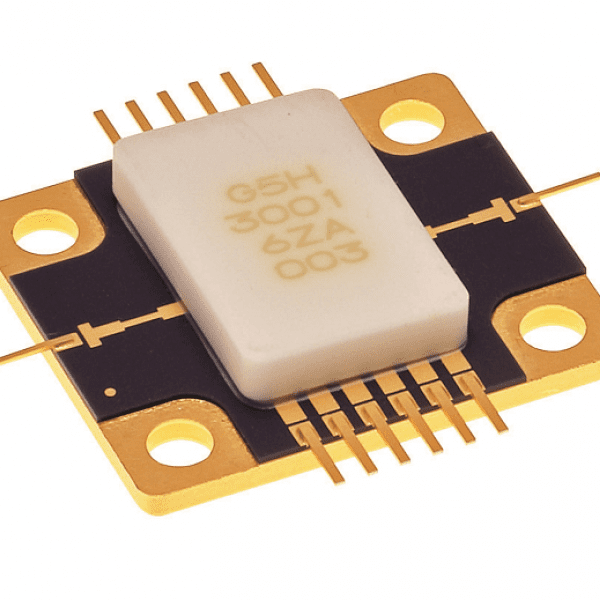
figure can be challenging at Ka band frequencies, along with phase noise and spurious performance of the local oscillator. The BUC essentially does the inverse of the BDC, it takes an incoming IF signal, amplifies, filters and upconverts to the desired uplink frequency. The same comment applies to the local oscillator, however what is unique with the BUC is the power amplifier section (PA). The PA is the final stage in the BUC line-up and responsible for providing enough power for the uplink signal to reach the geostationary satellite. So proper care must be taken when selecting the devices for this line-up. PA’s have several challenging attributes especially at x band frequencies and above; delivering output power, efficiency, linearity and stability as it relates to self-oscillation.
It’s All About the Power!
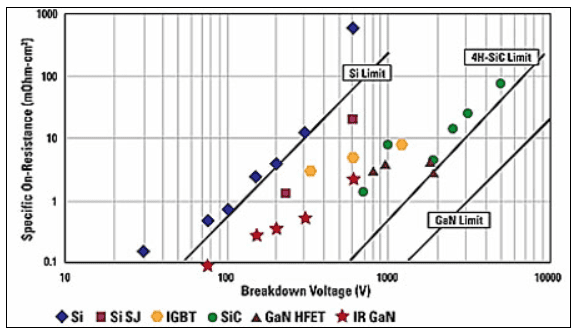
Historically there has been only one material process option for PA devices that delivery gain and meet the power requirement for VSAT applications, Gallium Arsenide (GaAs) especially C-band and above. Although GaAs has dominated medium power applications its steadily be displaced by GaN. GaN can produce much higher output power at the same frequencies and
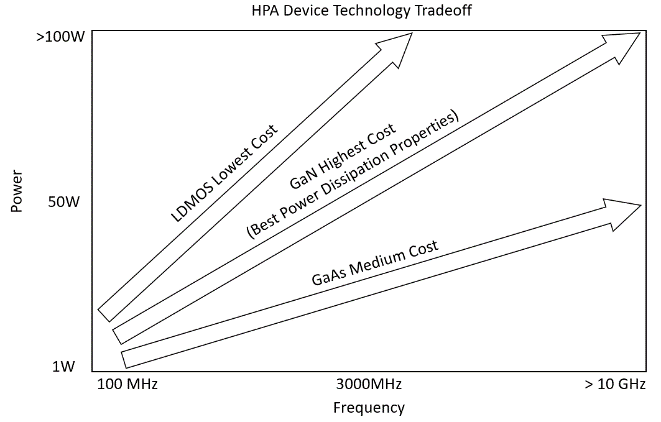
increased bandwidth as GaAs. In addition, GaN can handle higher drain voltages, thus reducing current consumption, has a wide band gap structure, which translates to higher power density, operating temperatures, smaller die and PAE over GaAs. NuWaves is engaging this market and is well positioned to leverage our extensive experience with GaN by delivering high power, high frequency, power efficient designs that meet current and next generation VSAT markets.
References
– Figure 1 – https://www.researchgate.net/figure/Figure-Clarke-belt-at-km-around-the-equator_fig12_47638498
– Figure 2 – http://yamamah.ly/?page_id=335
– Figure 3 – https://www.viasat.com/industries-applications/defense
– Figure 4 – https://www.rfwireless-world.com/Terminology/Advantages-and-Disadvantages-of-L-S-C-X-Ku-K-Ka-Frequency-Bands.html
– Figure 5 – https://www.vsat-systems.com/satellite-internet/how-it-works.html
– Figure 7 – https://www.everythingrf.com/community/what-is-an-orthomode-transducer
– Figure 8 – https://www.researchgate.net/figure/Down-converter-block-diagram_fig1_256292599
– Figure 9 – https://compoundsemiconductor.net/article/105588/GaN_Empowers_Satellite_Communication
– Figure 10 – https://compoundsemiconductor.net/article/105588/GaN_Empowers_Satellite_Communication
– Figure 11-12 – NuWaves Engineering
About NuWaves
NuWaves RF Solutions is a premier supplier of RF and Microwave solutions for Department of Defense (DoD), government, and industrial customers. An RF engineering powerhouse, NuWaves offers a broad range of design and engineering services related to the development and sustainment of key communications, telemetry and electronic warfare systems, as well as a complete line of commercially available RF products. NuWaves’ products include wideband frequency converters, high-efficiency and miniature solid-state power amplifiers and bidirectional amplifiers, high intercept low noise amplifiers and miniature RF filters. NuWaves RF Solutions…Trusted RF Solutions™.

